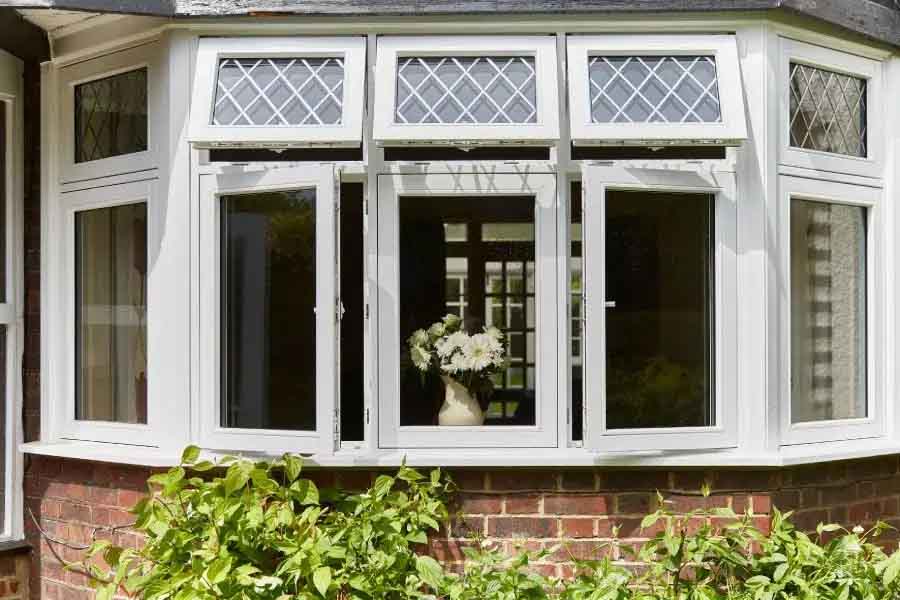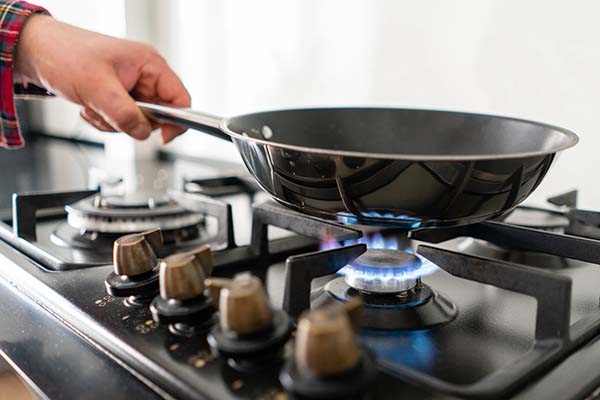Why do homes need ventilation?
Ventilation isn’t rocket science, but it is important, and often overlooked. Unfortunately, the UK’s climate has encouraged a tendency for people to keep their windows shut to retain warmth, which can, over time, lead to other problems. In this article, we’ll explore the how, the why, and the what behind air ventilation to ensure you’re equipped to improve the air quality inside your home.
What are the benefits of ventilating your home?
Air ventilation is all about keeping an indoor space clean, healthy, productive, and enjoyable to be in. Without proper ventilation, the air inside your home can quickly become stale, humid, and filled with pollutants from everyday activities. Over time, neglecting the temperature, humidity, and pollutant levels within your home can cause severe structural damage and lower the value – and liveability – of your home. Ventilation is easy, low-cost, and can get you thinking more often about how air quality might be affecting you in your day-to-day life.
How can I ventilate my home?
Unless you live on the International Space Station, the best way to ventilate a home is usually just to open a window for an hour or so (if the weather allows for it). Most UK homes don’t have mechanical ventilation because, given our climate, we just wouldn’t use it enough throughout the year to warrant the purchase, running costs, and continued maintenance. Some hotels and high-end residential spaces, however, do utilise HVAC systems which can provide a continuous low-level of air ventilation as well as temperature regulation.
If your windows have trickle vents built into your window frames (located just above the window pane, usually), make sure they’re open so that the space can receive low-levels of ventilation consistently and reduce the level of condensation on your windows.
The best time to ventilate your space is often in the morning, as outdoor pollution levels are typically rather low, and you can leave the window open for an hour as you get ready to go to work. This ensures moisture and other pollutants built up in the evening and overnight are released.
Another method involves flooding your space with outside air very briefly (5-10 minutes) by opening all your windows as wide as possible. This is called shock ventilation and works best during the colder months (and, of course, the Germans have a word for it: Stoßlüften). This provides enough time to replace most of your indoor air without letting your walls or furniture cool down enough to lower the indoor air temperature by very much.
Here’s a tip on best practice: leaving your extractor fan on for 10 minutes or so after you’re done cooking or showering is a great way to improve your air quality. Generally, we turn the fans off too soon which means we don’t fully evacuate the moisture or pollutants, but leaving them on for a little bit longer can go a long way.
What causes poor air quality indoors?
Cooking is one of the biggest sources of indoor pollution and it generates airborne particulates (PM2.5, PM10), harmful gases, odours, and heat. This is why it’s important to utilise your kitchen extractor fan if you have one. An open window can also be beneficial.
Showering and using washing machines, tumble dryers, or dishwashers can also generate heat and steam, increasing a space’s humidity levels. This can lead to a space feeling uncomfortable and can encourage mould to grow. It’s also worth checking that there are adequate systems in place to extract the air from these devices. The paper test can be used to check if a fan is extracting air by placing a sheet of paper over the grille. If it sticks, that means the air is flowing properly. If it doesn’t stick, that means it isn’t working properly, and if it repels the paper, that means air is flowing into the space. It can also be worth checking the ducting to ensure there are no loose connections or rips in the fabric (on flexible ducting) which might be spilling warm, dirty air into your space.
Cleaning agents and scented products like perfumes, candles, surface cleansers, and laundry products can all release Volatile Organic Compounds (VOCs) when used. These are typically noticeable by their smell and can be harmful to health when inhaled (depending on the specific compounds – we advise you to avoid all VOC-emitting products wherever possible).
Do HEPA air purifiers work instead of ventilation?
The short answer: nope. You’ll need to open a window every so often to flush out the gases and odour that build up inside over time.
Air purifiers are great at catching particles, like pollen and dust, but their filters will degrade or get blocked eventually, resulting in an ineffective air purifier. Even with a top-of-the-line air purification unit, you’ll still need to remove the harmful gases like CO2, which a filter won’t be able to capture. That’s why we rely on air ventilation to replace those indoor gases with a (usually) healthier mix of outdoor gases.
How can you tell if a house is poorly ventilated?
Odours – both good and bad – tend to linger in a house without proper ventilation. If the first thing you notice when you step inside is a smell, it might be worth rethinking how often your space gets ventilated and how much of your air is replaced.
Another telltale sign is condensation along the edges of windows. In turn, this increased moisture level can lead to mould growth (not only making your house smell worse, but also putting your health at risk) and can even cause your paint to peel and wood to disfigure.
If you feel a headache, sick, dizzy, confused, or just slower than normal whenever you’re inside a particular space, this could mean that the Carbon Dioxide concentrations are too high and so your brain isn’t receiving enough Oxygen. Elevated CO2 levels are most common in tightly-populated spaces like offices, but houses, flats, and hotel rooms can also suffer from the same issue. This condition is often referred to as ‘Sick Building Syndrome’. However, the aforementioned health effects can also indicate the presence of Carbon Monoxide or other harmful gases, so it’s important to contact a professional if you start to notice a pattern.
During the summer months, pollen can make certain spaces unbearable for people with allergies. In this case, air purification and well-timed air ventilation are both effective methods of removing the pollutants.
Final thoughts
Good ventilation is one of the simplest and most effective ways to protect your health and the condition of your home. By allowing fresh air in and removing stale or humid air, you can prevent mould, damp, and unwanted odours while keeping your indoor environment pleasant and balanced. Whether it’s as simple as opening a window, maintaining your extractor fans, or checking that ducting is properly fitted, small steps can make a big difference to protect both health and the condition and quality of the living space.





